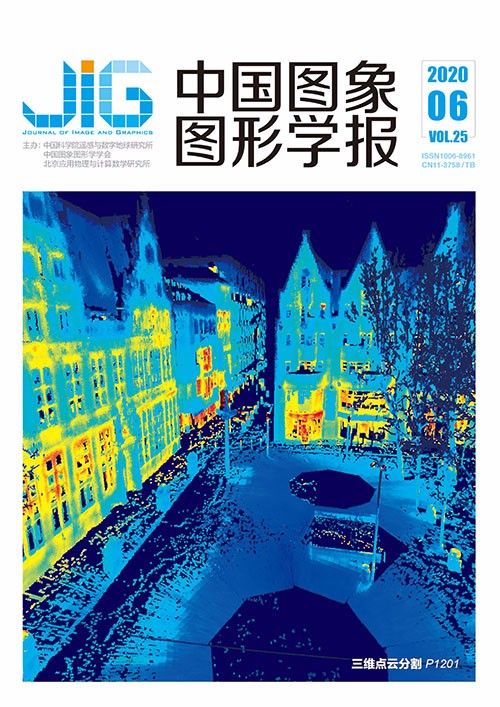
新型雷达辐射源识别
摘 要
目的 雷达辐射源识别是指先提取雷达辐射源信号特征,再将特征输入分类器进行识别。随着电子科技水平的提高,各种干扰技术应用于雷达辐射源信号中,使得信号个体特征差异越来越不明显,仅靠传统的模板匹配、分类器设计、决策匹配等辐射源识别技术难以提取信号可辨性特征。针对这一问题,利用深度学习良好的数据解析能力,提出了一种基于卷积神经网络的辐射源识别方法。方法 根据雷达辐射源信号的特点,对未知辐射源信号提取频域、功率谱、信号包络、模糊函数代表性切片等传统域特征,从中获得有效的训练样本特征集合,利用卷积神经网络自动获取训练样本深层个体特征得到辐射源识别模型,将其用于所有测试样本中,获得辐射源识别结果。结果 在不同域特征下对卷积神经网络的识别性能进行测试实验,并将本文方法与基于机器学习和基于深度强化学习的深度Q网络模型(depth Q network,DQN)识别算法进行对比,结果表明,当卷积神经网络的输入为频域特征时,本文方法的识别准确率达100%,相比支持向量机(support vector machine,SVM)提高了0.9%,当输入为模糊函数切片特征和频域时,本文方法的平均识别准确率与SVM模型、极限学习机(extreme learning machine,ELM)分类器和DQN算法相比,分别提高了16.13%、1.87%和0.15%。结论 实验结果表明本文方法能有效提高雷达辐射源信号的识别准确率。
关键词
New radar emitter identification method
Gao Xinyu1, Zhang Wenbo1, Ji Hongbing1, Ouyang Cheng2(1.School of Electronic Engineering, Xidian University, Xi'an 710071, China;2.Science and Technology on Electronic Information Control Laboratory, Chengdu 610036, China) Abstract
Objective In complex electronic warfare, radar emitter identification is an essential component of electronic intelligence and support systems; its related technology remains a critical factor in measuring the level of electronic countermeasure equipment technology. Radar emitter identification refers to extracting signal characteristics and then inputting the features into the classifier for identification. With the improvement of electronic technology, various jamming techniques have been applied to radar, making the identification of individual signal differences difficult. In addition, There are many types of radar signals, various modulation methods, and wide frequency coverage. Small individual feature differences between radar signals. There are a lot of noise, clutter and multipath interference in signals. Researchers mainly conduct the following two aspects, one is to extract the effective individual characteristics of the signal; the other is to optimize the classifier. Extracting signal discriminability characteristics using traditional radiation source identification techniques, such as template matching, classifier design, and decision matching, is challenging. Radar source identification technology is developing in the field of artificial intelligence. In cognitive ability, radiation source identification technology has a lot of room for development in the intelligent field. In the face of complex and diverse radar radiation source signals, existing radar radiation source identification algorithms are no longer able to cope with dense radar radiation source identification tasks. Given the robust data analysis capabilities of deep learning, convolutional neural network (CNN) are among the earliest and most widely used deep learning models. CNN has been used in radar source identification. In general, a CNN consists of the convolutional, pooling, activation, and fully connected layers. The convolutional layer and the layer stack structure extract powerful features and different features of data, respectively. The activation layer is used to enhance the feature expression ability of a network. The pooling layer can reduce dimensions and sparse feature layers. Feature combination and classification are performed at the full connection layer. In accordance with the characteristics of the radar radiation source signal, we propose a new radar source identification method based on CNN. Method Firstly, the data pre-processing unit is used to reduce the interference of noise on the signal. Secondly, the obtained signals are first extracted from their different domain features, and then the training set test set is divided. The third step is to design a convolutional neural network to extract and classify the extracted signals. At last, evaluate the performance of the method using test samples. The proposed method realizes the accurate identification of radar radiation source, which can fully mine the deep individual information of the radiation source signal. To extract the individual implicit features of the radiation source signal, our CNN has five layers; the first three are convolutional and the remaining two are fully connected layers. The kernel of the third convolutional layer and the pooling layer is set to 1D. Rectified linear unit (ReLU) nonlinearity is applied to the output of every convolutional and fully connected layer. ReLU improves network non-linearity. We use dropout, which can prevent overfitting, in the first two fully connected layers. The role of dropout is to randomly inactivate some neurons. The first convolutional layer filters with 36 kernels of size 3 with a stride of 1. The second convolution layer is consistent with the parameters of the first convolutional layer. The third convolutional layer has 64 kernels of size 5 with a stride of 1. The specific steps of the algorithm are as follows. First, the original radar data are preprocessed, i.e., signal noise reduction and normalization. Second, we extract different characteristics of the signal. Lastly, the CNN is trained using different features. Result The training set ratios are 20%, 40%, 60%, and 80% of the total number of samples. This study compares the recognition accuracy of CNN when the input is a different feature and compares the recognition accuracy of the support vector machine (SVM), extreme learning machine (ELM), and depth Q network (DQN) models in deep reinforcement learning. Experiments show that the input of the network is different domain characteristics when the training set ratio is 80%; a high recognition rate can be obtained. Recognition accuracy rate reaches 100% and 99% for the spectral and fuzzy function slice features, respectively. When the input is the frequency domain feature with 80% of the training set, we compare the performance of SVM. Our method outperforms SVM. In particular, it improves accuracy by 0.9%. When the input is the fuzzy function slice feature, the accuracy rate of our method is improved by 16.13% and 1.87% compared with the SVM and ELM classifiers, respectively. Compared with the current popular recognition algorithm DQN, the improvement is 0.15%. In the experiment, when the input is a fuzzy function slice feature and the frequency offset values are 3 and 5, the four classifiers all obtain good recognition results. In particular, the method proposed in this paper has the highest recognition accuracy. It shows that choosing the optimal “near-zero” slice is helpful for the identification of radar radiation source. Conclusion The CNN designed in this study exhibits a strong feature expression ability. The experiment results show that our proposed method extracts the implicit features of signal discrimination and obtains a stable recognition rate. This method simplifies the network structure and requires less experience and hyperparameters in the same situation. It can improve the recognition accuracy of radar emitters.
Keywords
deep learning radar emitter identification convolutional neural network (CNN) recognition accuracy frequency domain feature fuzzy function slice
|



 中国图象图形学报 │ 京ICP备05080539号-4 │ 本系统由
中国图象图形学报 │ 京ICP备05080539号-4 │ 本系统由